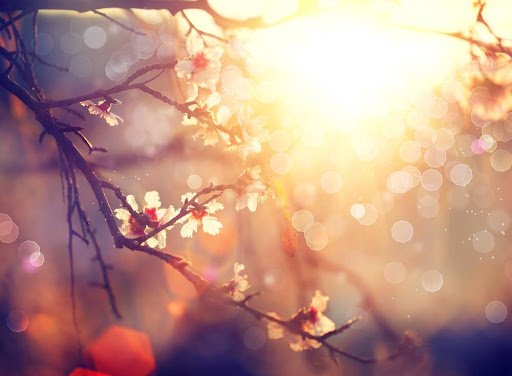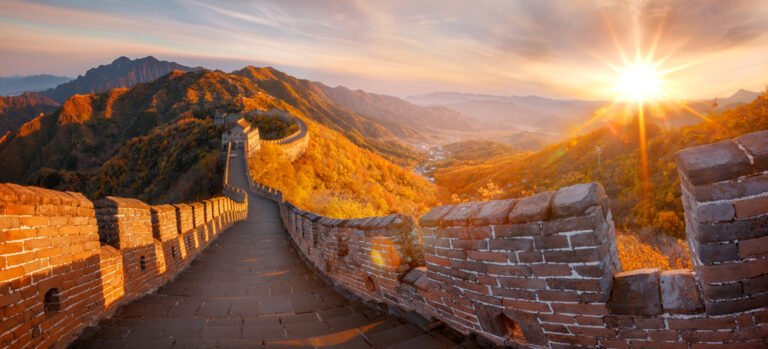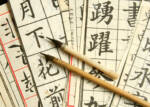Introduction to Chinese Seasons

If you’ve ever marveled at the beauty of the cherry blossoms in spring or felt the serene calm of a snowy winter evening, you know just how integral seasons are to our lives.
Yet, in Chinese culture, the seasons aren’t just transitions in weather. They’re chapters of a story, each with its own character, festivals, and ancient wisdom.
Now, you might be thinking, “Seasons are seasons, right? How different can they be?” Well, prepare to have your mind gently blown. The Western concept of seasons, while cozy and familiar, is just the tip of the iceberg. Get into the traditional Chinese understanding, and you’ll find yourself in a world where the seasons are not just four quarters of the year but part of a sophisticated system that has influenced life in China for millennia.
So, whether you’re here to expand your vocabulary with phrases related to seasons in Chinese, are eager to learn about spring in the Chinese language, or are simply curious about the seasons in China, you’ve come to the right place.
Grab a cup of your favorite Chinese tea, and let’s explore the fascinating Chinese seasons together.
The four seasons in Chinese
Whether it’s learning about the seasons in Chinese or discovering how the seasons in China influence everything from Chinese poetry to cuisine, let’s unwrap the seasons one by one, discovering the heart and soul of Chinese culture through its most fundamental rhythms.
Spring (春天 — Chūntiān)

Ah, spring! Or as we say in Chinese, 春天 (Chūntiān). This season is a fan favorite for many and for good reasons. Spring in China is like the world’s most vibrant canvas coming to life. It’s when flowers burst into bloom, and the air fills with a sense of renewal.
In terms of vocabulary, alongside 春天, you’ll often hear terms like 春季 (chūnjì) spring season, and 温暖 (wēnnuǎn) warm, painting a picture of the season’s gentle, inviting climate.
Spring is also a time of significant festivities. The Chinese New Year, also known as the Spring Festival, ushers in the lunar new year with fireworks, family reunions, and the famous red envelopes.
Then, there’s the Qingming Festival, a time for honoring ancestors and picnicking amidst nature’s newfound lushness. These celebrations aren’t just holidays either. They’re a vibrant part of China’s culture and history, deeply entwined with the essence of spring.
Weather-wise, spring sees China in a state of awakening. From the mild and moist air in the south to the still slightly brisk breezes in the north, it’s a season of transition and diversity across the country’s vast landscapes.
Related Reading: The Mandarin Blueprint Guide to Chinese Festivals
Summer (夏天 — Xiàtiān)

Welcome to summer, or 夏天 (Xiàtiān), a season of warmth, vitality, and a bit of sweltering heat. The vocabulary for summer brings to mind long days and lush landscapes, with terms like 炎热 (yánrè) hot and 阳光 (yángguāng) sunshine, capturing the season’s intensity.
The Dragon Boat Festival is one of summer’s highlights, featuring dragon boat races and the consumption of zongzi (rice dumplings). It’s a time of community, competition, and culinary delights, celebrated on the fifth day of the fifth lunar month, blending history with the thrill of sports.
The weather in summer across China can range from comfortably warm to intensely hot, with southern regions experiencing high humidity and the north enjoying dry heat. It’s a perfect time for enjoying China’s abundant outdoor beauty, though you might also want to find some refuge in the cool air-conditioned museums or tea houses.
Autumn (秋天 — Qiūtiān)

Autumn, or 秋天 (Qiūtiān), carries the essence of change, with a cooler breeze and a kaleidoscope of colors adorning the trees. Vocabulary like 凉爽 (liángshuǎng) cool, and 枫叶 (fēngyè) maple leaf, evoke the serene and picturesque beauty of this season.
The Mid-Autumn Festival, with its mooncakes and lanterns, highlights the season, celebrating the full moon and the abundance of the harvest. It’s a time for family, reflection, and savoring the sweet taste of mooncakes under a moonlit sky.
Weather patterns in autumn present a respite from the summer heat, with clear, crisp air and a gradual cooling that prepares the landscape for winter. It’s arguably one of the most beautiful times to explore China, as the foliage turns to brilliant shades of red, orange, and yellow.
Related Reading: Debunked: Common Myths about Learning Chinese
Winter (冬天 — Dōngtiān)

Then comes winter, or 冬天 (Dōngtiān), wrapping the year in a blanket of quiet and contemplation. Winter’s vocabulary reflects its serene beauty and the chill in the air, with words like 寒冷 (hánlěng) cold and 雪 (xuě) snow, painting a picture of the season’s quiet majesty.
The significance of the winter solstice is deeply felt in China, marking a time of family gatherings and the eating of traditional foods like dumplings, symbolizing warmth and unity in the cold.
Weather-wise, winter can be quite diverse across China. The north experiences a cold, crisp winter, often with snow, ideal for ice festivals and winter sports, while the south enjoys milder temperatures, offering a different but equally charming winter experience.
Through the cycle of the seasons, China’s landscapes, traditions, and daily life undergo a beautiful transformation, each season bringing its own unique flavor and set of experiences. From the rebirth of spring to the introspection of winter, the seasons in Chinese culture are a dance of nature and tradition, a rhythm that pulses through the heart of life in China.
Related Reading: Chinese for Foodies: A Culinary Language Journey
The 24 solar terms
If you thought seasons were just about swapping your wardrobe and adjusting your thermostat, think again! In Chinese culture, the calendar is a masterpiece of precision and poetry, with the 24 solar terms serving as its backbone. This ancient system isn’t just about marking time; it’s a guide to living in harmony with nature’s rhythms, deeply rooted in agricultural practices, traditional Chinese medicine, and even culinary traditions.
The genesis of solar terms
The concept of the 24 solar terms was developed thousands of years ago, and it’s as much a part of the culture of China as silk or calligraphy. Each term corresponds to a specific solar position, creating a calendar that guides farmers through the agricultural year. From sowing seeds to harvesting crops, these terms are the unsung heroes of China’s bountiful landscapes.
A peek into the solar terms
Exploring all 24 terms would be like trying to summarize an epic novel in a tweet. Let’s highlight a few to give you a taste of their significance:
- Spring Equinox (春分 — Chūnfēn): This term marks the moment when day and night are of equal length, symbolizing balance and renewal. It’s a reminder to embrace spring’s new growth and fresh starts.
- Grain Rain (谷雨 — Gǔyǔ): As poetic as it sounds, Grain Rain signifies the last spring rainfall, vital for the growth of crops. It’s a time when the earth is draped in green, whispering promises of abundance.
- Summer Solstice (夏至 — Xiàzhì): The longest day of the year ushers in the peak of summer. It’s a moment to soak up the sun’s energy, celebrating the warmth that nurtures the soul and the soil.
- White Dew (白露 — Báilù): As autumn whispers its arrival, the White Dew term reflects the cooler mornings when dew turns white, a gentle nudge to prepare for the coming chill.
These terms do more than just mark the changing of the seasons. They’re a testament to China’s deep connection with the natural world, influencing everything from farming practices to the food on your plate.
The cultural influence
The 24 solar terms aren’t just agricultural markers; they’re an essential aspect of Chinese culture. They influence traditional Chinese medicine, where the changing seasons suggest shifts in diet and lifestyle to maintain balance and health. They inspire artists and poets who see the eternal cycle of life and renewal in solar terms.
Even in today’s modern China, these terms are celebrated with festivals, foods, and customs that honor the earth’s natural rhythms.
Embracing the rhythm
Understanding the 24 solar terms offers a unique lens through which to view the seasons in China, revealing a culture that moves to the beat of the earth’s drum. It’s a reminder that, in the hustle and bustle of modern life, there’s wisdom in slowing down and syncing with the natural world. Let these solar terms be a guide to a richer, more harmonious way of living.
Related Reading: Exploring China as a Digital Nomad
Understanding the Chinese seasons
The rhythms of nature are much more than mere transitions of weather. They’re a profound reflection of China’s cultural essence, from the lively festivals of spring and summer to the contemplative quiet of autumn and winter. The unique 24 solar terms enrich this landscape, offering a detailed map of life in harmony with the earth’s cycles.
Understanding these seasons in the Chinese context provides a deeper appreciation for the intricate ways in which culture, language, and nature intertwine.
But why stop at appreciation? If you’ve ever dreamed of delving deeper into Chinese culture or if the beauty of the seasons has sparked a desire to learn Mandarin, we have an exciting opportunity for you.
Want to Learn Mandarin faster and easier?
It’s time to take the first step on a journey that’s as rewarding as the unfolding of spring or the harvest of autumn.
Complete the FREE Mandarin Fluency Scorecard today and begin your personalized path to fluency. This isn’t just another quiz. It’s a comprehensive assessment of your current Chinese skills designed to highlight your personal weaknesses and barriers to fluency.
Imagine having a roadmap that identifies where you are and shows you where you need to go, tailored specifically to your individual learning journey.
Discover the next step based on your current level, whether you’re a budding beginner touched by the first rays of spring or an advanced learner ready to harvest the fruits of your dedication. You’ll receive a custom report with immediate action steps, guiding you towards fluency with the precision of the 24 solar terms steering farmers through the seasons.
The best part? It’s completely FREE and takes under 60 Seconds. In less time than it takes to sip a cup of Chinese tea, you could unlock the secrets to faster, easier Mandarin learning. This is your moment to transform curiosity into mastery, to turn seasonal inspiration into linguistic achievement.
So, are you ready to align your language learning journey with the natural rhythm of Chinese culture?
Discover the next step in your Mandarin learning adventure and discover the seasons of China in a whole new way. Your custom guide to fluency awaits, and with it, the keys to unlocking a deeper connection with the rich world of Chinese life and language.








